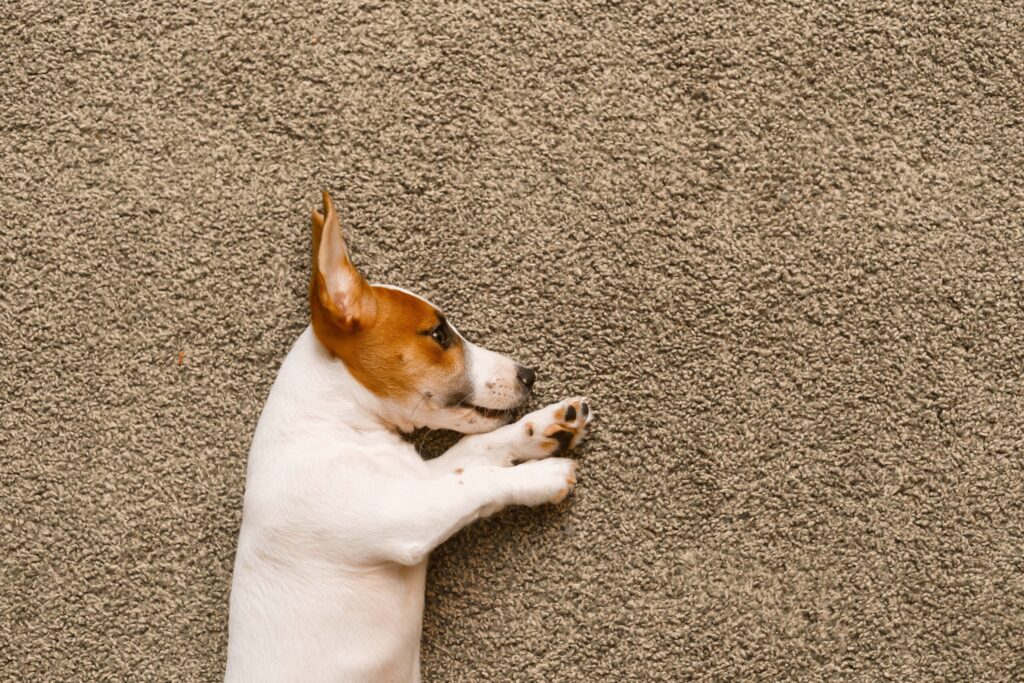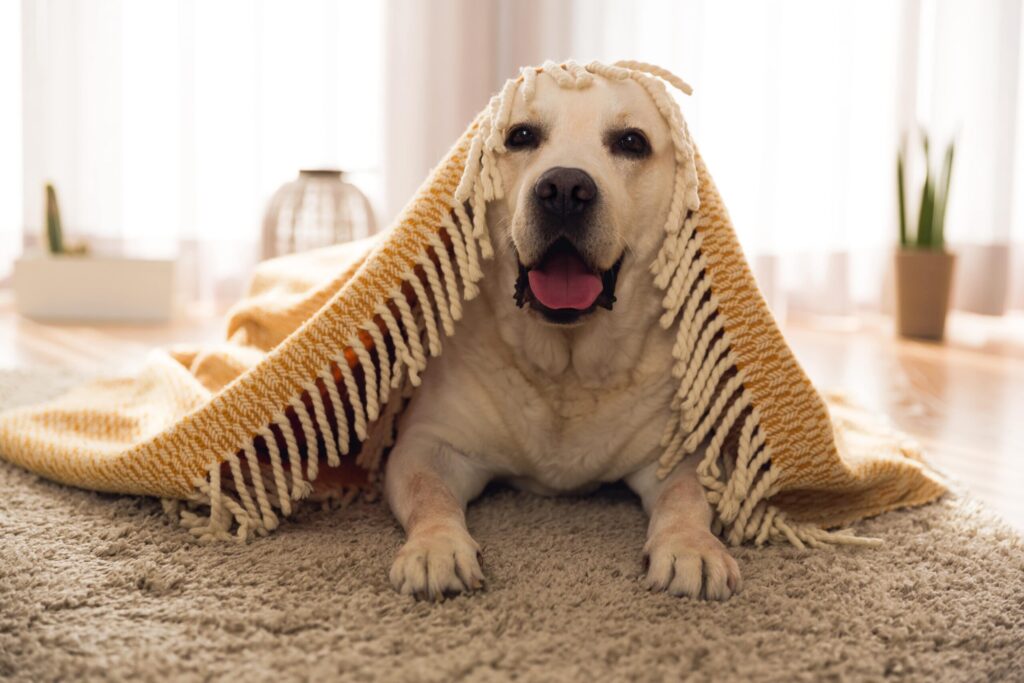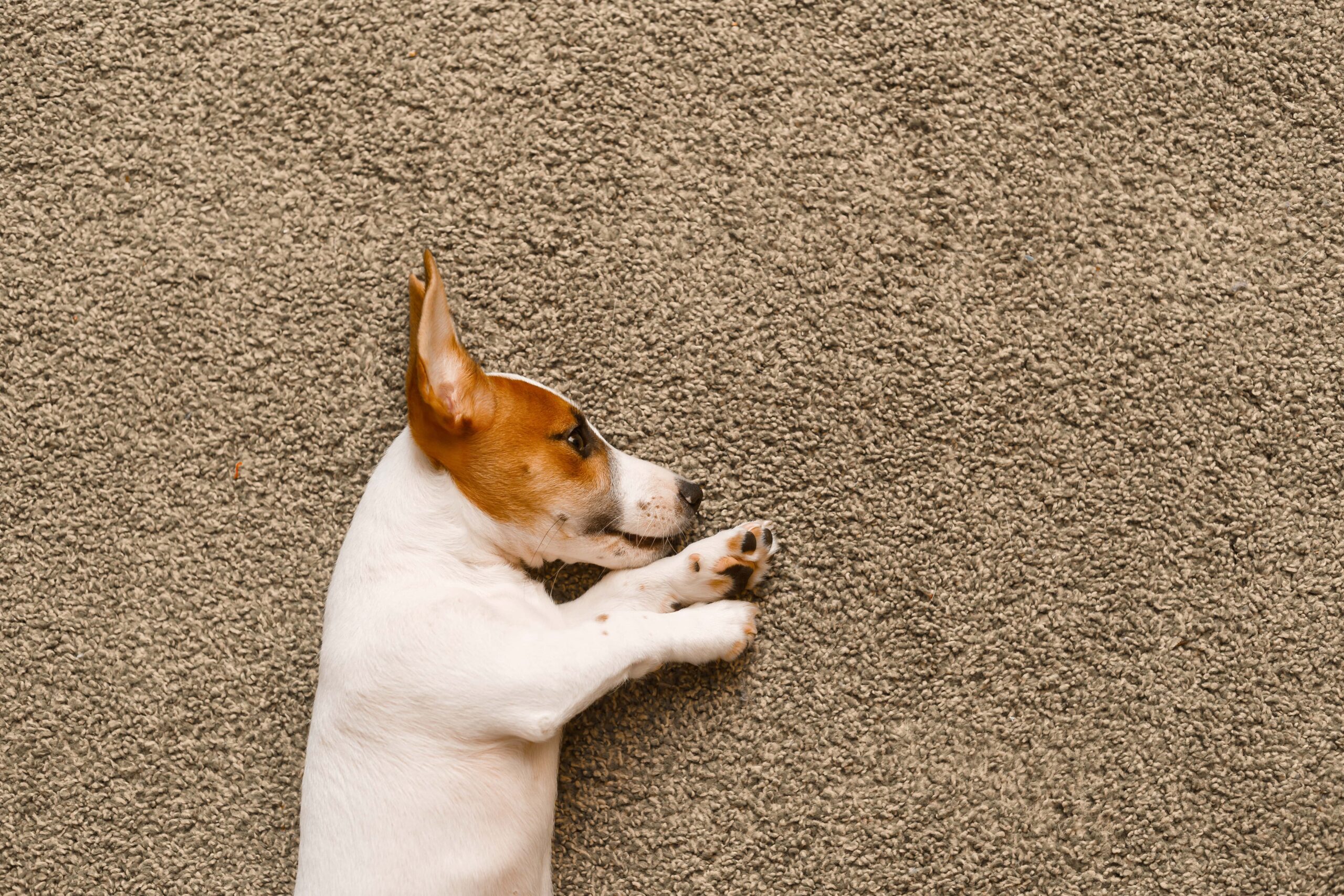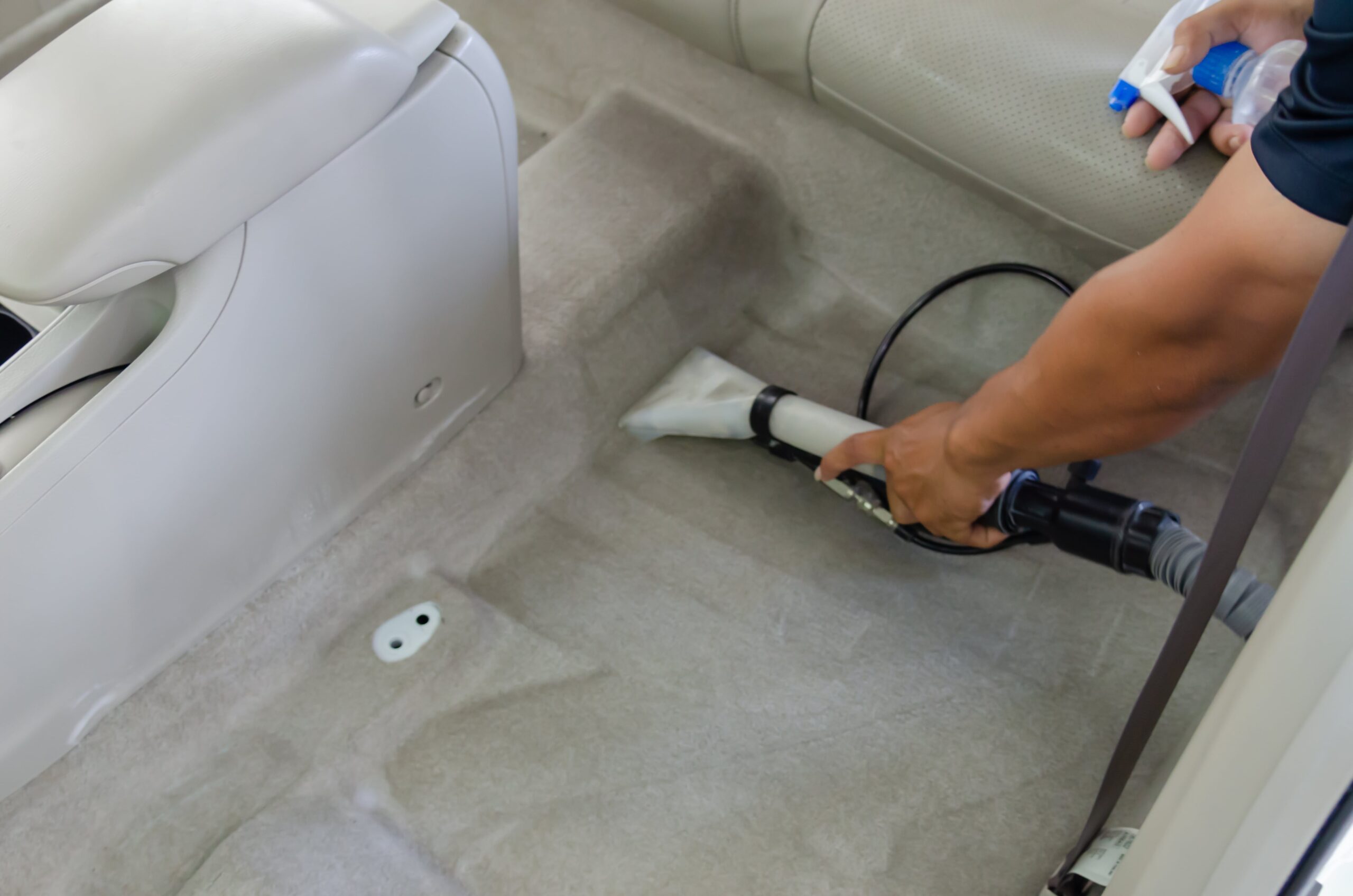For pet owners, the joy and companionship that furry friends bring into our lives are unparalleled. However, along with the love and laughter, pets can also leave behind unexpected messes, particularly in the form of stains and odors. Whether you have a mischievous kitten, a rambunctious puppy, or a loyal older companion, dealing with pet stains is a common challenge.

There are some key differences between regular carpet and furniture stains and pet stains:
The differences between regular carpet and furniture stains and pet stains primarily lie in the composition and nature of the stains. These distinctions necessitate different cleaning methods for effective removal. Here are the key differences:
- Composition of Stains:
- Regular Stains: Typical stains on carpets and furniture, such as spills, food, or dirt, are often water-based or oil-based. They may contain substances like coffee, wine, or sauces.
- Pet Stains: Pet stains, on the other hand, are primarily composed of biological substances like urine and feces. These stains contain organic matter, proteins, and enzymes that require specific enzymatic cleaners for effective removal.
- Odor:
- Regular Stains: While regular stains may carry odors, they are typically not as pungent or persistent as pet odors.
- Pet Stains: Pet stains often come with strong and persistent odors, especially if not properly cleaned. The odor can linger even after the stain is seemingly removed, requiring specialized cleaners to break down the odor-causing compounds.
- Enzymatic Nature:
- Regular Stains: Conventional stains do not contain enzymes, which are essential for the breakdown of organic matter.
- Pet Stains: Pet urine, in particular, contains enzymes like urease and uricase. These enzymes can break down into ammonia, which creates a strong and unpleasant odor. Enzymatic cleaners are specifically designed to neutralize these enzymes and remove the source of the odor.
- Deep Penetration:
- Regular Stains: Many regular stains, especially if attended to promptly, may remain on the surface or penetrate only slightly into the fabric or carpet fibers.
- Pet Stains: Pet urine can penetrate deep into carpets, upholstery, and even subflooring, making it more challenging to completely remove the stain and odor. Effective pet stain cleaning methods must reach these deeper layers.
- Longevity of Odor:
- Regular Stains: The odor from regular stains is usually short-lived and dissipates relatively quickly with proper cleaning.
- Pet Stains: Pet odors can persist for an extended period if not adequately treated. This is due to the enzymatic action mentioned earlier and the longevity of pet urine odor.
Because of these differences, it’s crucial to use enzymatic cleaners specifically designed for pet stains when dealing with urine and feces accidents. These cleaners are formulated to break down the organic matter, neutralize enzymes, and effectively eliminate both the stain and the odor at the source.
Conversely, conventional stain removers may not effectively address pet stains’ unique composition and odor-causing elements, making them less suitable for the task. Understanding these distinctions is key to successful stain and odor removal in homes with pets.
Once you’ve identified the source of the odor, take appropriate steps to address it. This may involve cleaning, repairing, or replacing affected materials, improving ventilation, or addressing underlying issues like water leaks or pests. Effective odor removal not only eliminates the smell but also prevents its return by addressing the root cause.

Fortunately, there are effective strategies designed specifically for pet stain removal that can help you maintain a clean and odor-free home.
- Act Quickly:
- Time is of the essence when dealing with pet stains. The sooner you address a fresh stain, the easier it is to remove. Blot up any excess moisture with paper towels or a clean cloth before starting the cleaning process.
- Use the Right Cleaning Solution:
- Not all cleaning solutions are created equal, especially when it comes to pet stains. Look for enzymatic cleaners specifically formulated to break down and neutralize pet urine and feces odors. These cleaners work effectively to eliminate both the stain and the odor at the source.
- Test in an Inconspicuous Area:
- Before using any cleaning solution, test it in a small, inconspicuous area of your carpet or upholstery to ensure it doesn’t cause discoloration or damage.
- Blot, Don’t Rub:
- When cleaning a pet stain, avoid scrubbing or rubbing the area vigorously, as this can push the stain deeper into the fabric or carpet fibers. Instead, gently blot the stain with a clean cloth or paper towel to lift it.
- Work from the Outside In:
- Start cleaning from the outer edges of the stain and gradually work your way toward the center. This helps prevent the stain from spreading.
- Follow Instructions Carefully:
- Read and follow the instructions on the cleaning product you’re using. Different products may have varying application and drying times.
- Rinse and Repeat If Necessary:
- After treating the stain, rinse the area with clean water and blot it dry. If the stain or odor persists, repeat the cleaning process as needed.
- Invest in a Wet Vacuum or Carpet Cleaner:
- For frequent pet accidents or larger stains, consider investing in a wet vacuum or carpet cleaner designed for pet messes. These machines are efficient at removing deep-seated stains and odors.
- Consider Professional Cleaning:
- In some cases, particularly for stubborn or old stains, it may be best to hire professional carpet or upholstery cleaners. They have specialized equipment and expertise to tackle even the toughest pet messes.
- Prevent Future Accidents:
- To reduce the likelihood of future pet stains, focus on proper pet training, provide regular bathroom breaks, and consider using pet-friendly deterrents or training aids.
Dealing with pet stains can be a challenging aspect of pet ownership, but with the right approach and cleaning products, you can effectively remove stains and odors, leaving your home clean and fresh. Remember that patience and diligence are key when it comes to pet stain removal, and a well-maintained living space ensures both you and your furry companions can enjoy a clean and happy home together.



